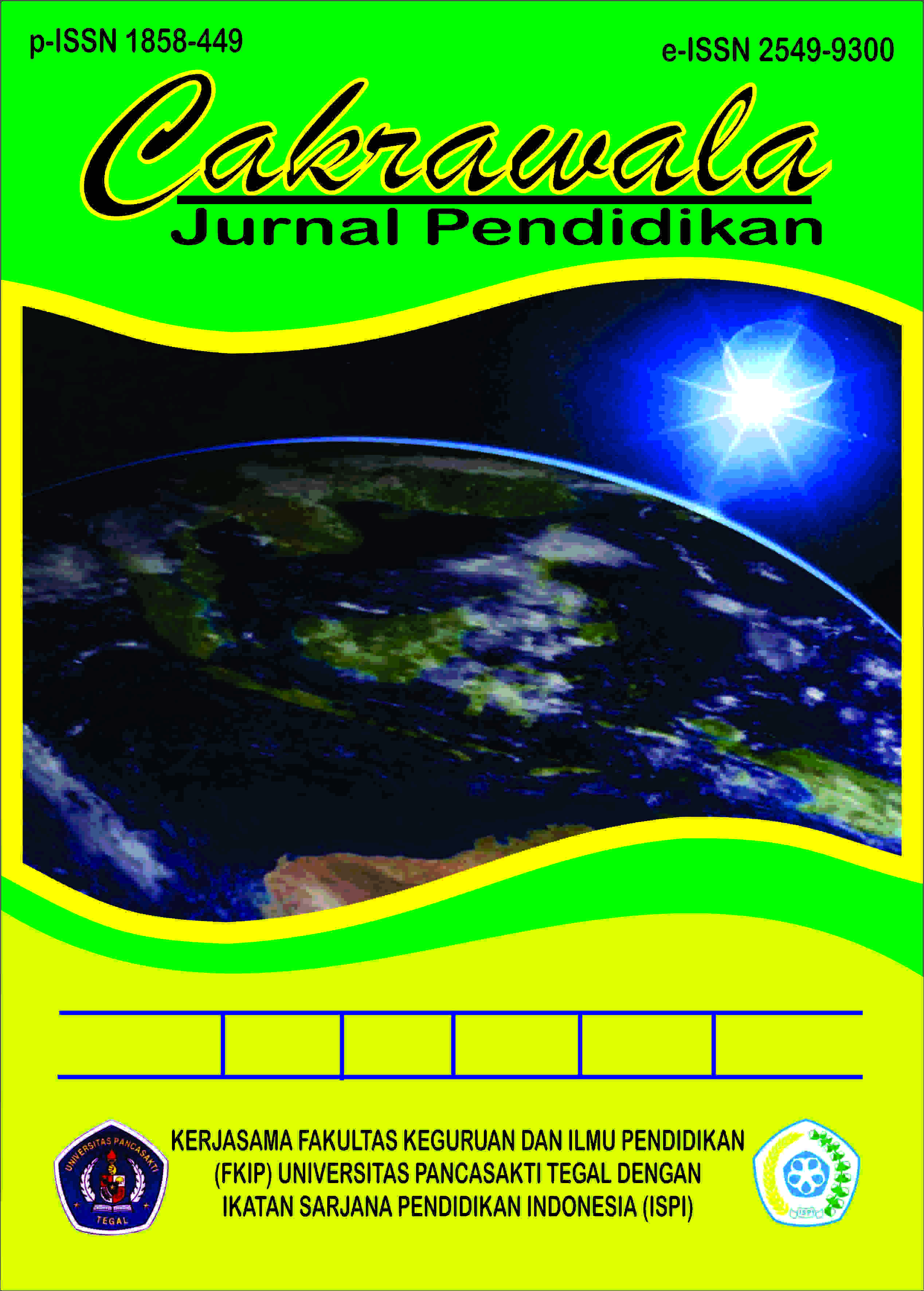Improving Students’ Motivation in Writing Procedure Texts Through MemoryRelated Strategy
Main Article Content
Abstract
This study was to investigate the memory related strategy in relation to students’ motivation in writing procedure texts. The problems
statement were formulated as follows: (1) what problems were faced by the students?; (2) how was Memory-related Strategy be
implemented by the students?; (3) how could Memory-related strategy improve students’ motivation in writing procedure texts? The
design of the research was a Classroom Action Research. The subjects of this study were the seventh grader of SMP Negeri of 1
Larangan which consists of 38 students. This study was implemented in three cycles. The instruments used to collect the data were
observation sheet, questionnaire, and students’ product. The collected data were analyzed qualitatively. The score of students’ writing
improved from pre cycle to cycle 1 to cycle 2. It can be concluded that the use of memory related strategy was able to make the students
enjoy the writing activities.
Article Details
With the receipt of the article by the Editorial Board of the Cakrawala: Jurnal Ilmu Pendidikan and it was decided to be published, then the copyright regarding the article will be diverted to Cakrawala: Jurnal Ilmu Pendidikan.
Cakrawala: Jurnal Ilmu Pendidikan hold the copyright regarding all the published articles and has the right to multiply and distribute the article under Creative Commons Attribution-NonCommercial 4.0 International License.
A copyright transfer from the author to the journal is done by filling out the copyright transfer form by the author.
Copyright Transfer Letter: Download
Creative Commons Attribution-NonCommercial 4.0 International License
References
Blackmore – Squires. (2010). An Investigation
into the Use of A Blog as a Tool to Improve
Writing in the Second Language
Classroom. Manchester :Manchester
University.
Brown, D.H. (2004). Language Assessment:
Principles and Classroom
Practices. London: Pearson Longman.
Brown, K & Hood, S. (1998). Writing Matter.
Cambridge: Cambridge University
Press.
Cohen, Louis, Lawrence Manion & Keith
Morrison. (2007). Research Methods in
Education. USA: Routledge.
Depdiknas. (2006). Kurikulum Tingkat Satuan
Pendidikan (School Based Curriculum).
Jakarta: Puskur, Balitbang.
Depdiknas. (2006). Standar Isi Mata Pelajaran
Bahasa Inggris Sekolah Menengah Pertama
dan Madrasah Tsanawiyah. Jakarta:
Puskur, Balitbang.
Celce-Murcia. (2001). Teaching English as a
Second or Foreign Language 3rd
Edition. New York: Heinle & Heinle
Thomson Learning.
Gardner,R.C, Lalonde, R. N, and
Moorcroft,R. (1998). The Role of
Attitudes and Motivation in Second
Language Learning: Correlational and
Experimental Consideration. Language
Learning,35,207-227.
Harmer, J. (1998). How to Teach English. Essex:
Longman.
Harsyaf. (2009). Teaching Writing. Jakarta:
Ministry of National Education.
Henning,G.(1987). A Guide to Language
Teaching. Rowley: Newbury House
Publishers.
Hyland, K. (2003). Second Language Writing.
Cambridge: Cambridge
University Press.
Jacobson, E.,Degener, S. and Victoria, P.G.
Creating Authentic Materials and Activities
for the Adult Literacy Classroom.
Cambridge: Cambridge
University Press.
Kemmis & Mc Taggart. (1998). The Action
Research Planner. Geelong: Deakin
University Press
Kusumaningsih. (2008). “Improving the
Writing Ability of the Students of
SMAN I Banjarbaru through Modified
Dialogue Journal”. Thesis, English
Language Education, Graduate
Program of State University of Malang.
Oxford, R. and Crookall, D.(1989). Research
on language learning strategies:
Methods, findings, and instructional
issues. Modern Language Journal, 73,
404-419.
Richards, J.C., (2006). Materials development
and research : Making the connection.
Cambridge: CUP
Richards, Regina G. (2008). Memory Strategies
for Students: The Value of Strategies.
Availlable at
http://www.ldonline.org/article/5736
/ (accessed on 16th March 2013)
Rizal, Syamsul. (2010). “Improving the
Writing Skill of the Second Graders of
MTs Nahdlatul Wathan 2 Rensing
Lombok through the Picture Word
Inductive Model Strategy”. Thesis.
English Language Education,
Graduate Program of State University
of Malang

